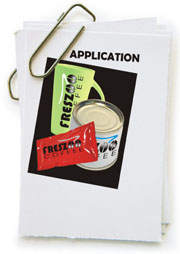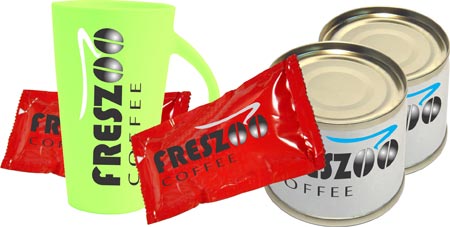Filing a Trademark Application
A trademark application can be costly and time consuming -
be sure to do it right the first time!
Once submitted, you will not be allowed to make alterations to the mark (other than ones of minor insignificance) or expand the scope of the registration.

Right! You've done your trademark searches and are satisfied that your mark is distinctive, is not immoral or offensive, does not infringe upon existing trademarks and is not likely to cause confusion?
Your trademark application needs to include the following information:
Name of the Applicant:
The person, company or other legal entity who is applying, must be the legal owner of the mark; i.e. the entity which uses the mark or intends to use it (either itself or through a proper license/franchise structure).
Address for Correspondence:
The address can be that of the applicant or that of the legal representative. Note that this address will be on public record, so if you wish to keep your physical address private, you should submit a postal address.
The onus is on you to keep your address details updated with the Trademark Office.
Details of the Goods or Services:
Trademarks by definition will be used upon goods or for services. For the purposes of trademark registration, all goods and services are categorized into "classes" - about 43 in all.
You need to specify a class (or more than one class) and then list the specific goods or services within that class for which you are applying for registration.
It is important to note that you cannot add goods or services once you've submitted the application.
Another application will have to be made for additional goods or services. The cost of electronic filing (if available in your country) is generally less expensive than paper filing and in some countries the fee for the additional classes may be discounted.
Basis for Filing:
Goods: If you base your trademark application on current use in commerce, you need to supply proof thereof (a "specimen" of use or "exhibit"). Photographs of the actual product displaying the mark, a label, packaging or display material can be submitted. This must be a accompanied by a declaration that the mark is in use, the date of first use and some references to the commercial activity.
Your claim of use must be bona fide. You cannot print your mark on a couple of t-shirts simply to reserve rights in a mark. Stationery, invoices or brochures displaying the mark are not acceptable proof for the use on goods.
Services: The same applies. You can submit advertisements of your business as well as corporate stationery and brochures as proof of use in commerce, (for a service mark).
Intent to Use: If you are not using the mark yet, you can file on a bona fide (good faith) Intent to Use basis. This acts as a "provisional application", but there's a time limit within which you need to prove actual use.
Quite often Intent to Use is the basis for filing in countries other than your own and can be done with a single filing in other member countries under the Madrid Protocol.

NOTE: Links to all the relevant Trademark resources are available on our Intellectual Property page.
A Clear Drawing of the Mark:
The simplest marks would just be words, numbers, or a combination, without claim to a specific font, color or size. The simplicity registration gives protection for all forms of the work. It may be a requirement of your Trademarks Office to specify a series of marks i.e. Upper case, lower case etc.
You can specify a font type and/or color in which case you need to state exactly how the color will be used and give a recognized color reference, for Example Pantone® 032.
If your mark consists of or includes a design element - e.g. a logo - you need to submit an exact drawing of the mark and submit it in color if applicable. You should restrict your drawing to an A4 sized image for manual submissions and to 8cm x 8cm for electronic or international submissions.
If the trademark application is for anything but a graphic image, you can submit videotapes, audiotapes etc. Sound marks can also be submitted electronically, if accepted by the country's trademark law.
Authorised Signature on your Trademark Application:
The signatory on the trademark application must have legal authority to do so. The signature must be either that of the legal owner or a duly appointed agent. For online filing there will be instructions on how to create an "electronic signature".
The official web sites of most countries provide very clear instructions to enable you to file your own trademark application.
However, there is no substitute for suitable legal counsel! Experienced trademark lawyers can refine your search for existing trademarks, advise on the classes for which you should register and handle queries, limitations or opposition to your application.
You are here:






